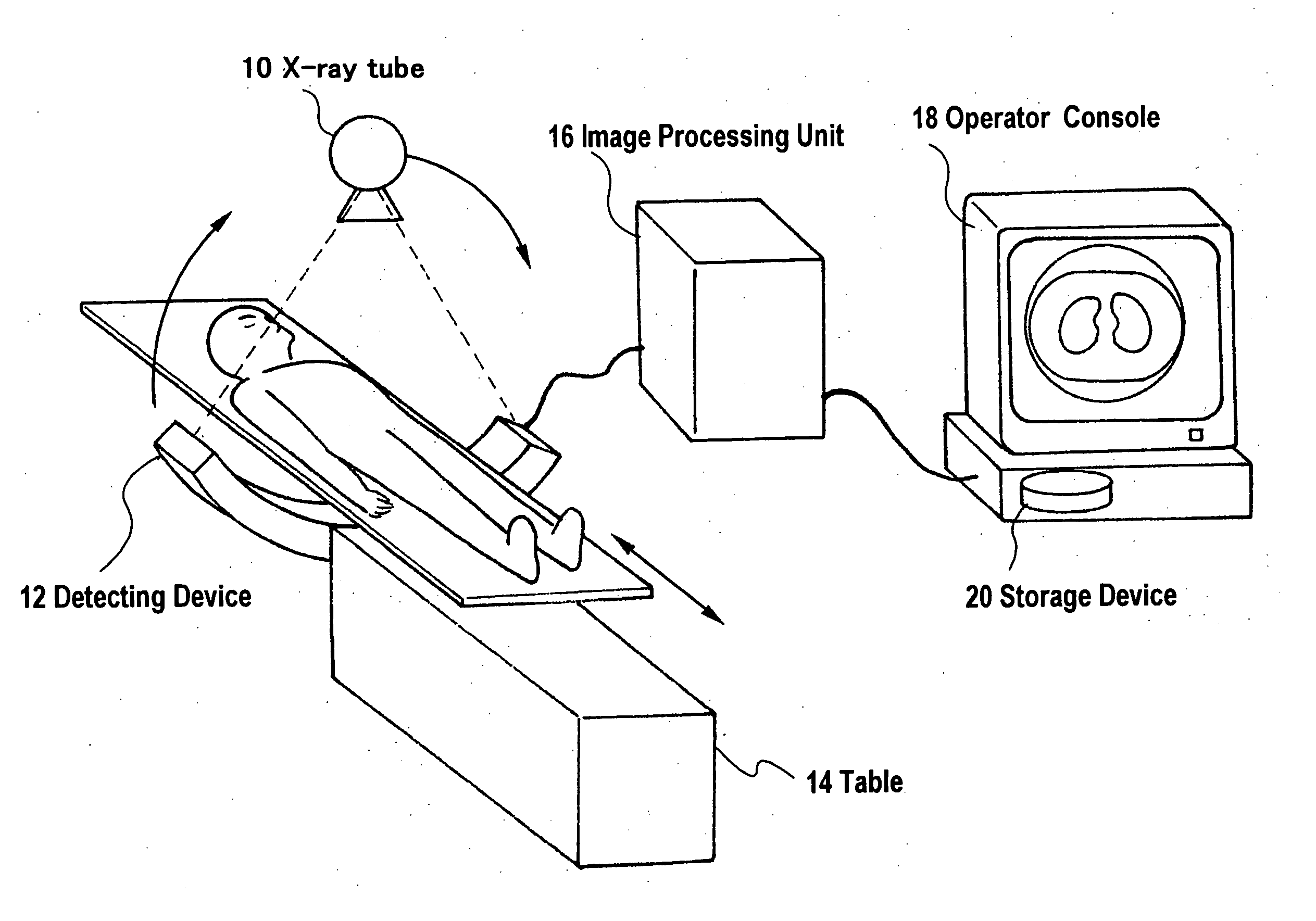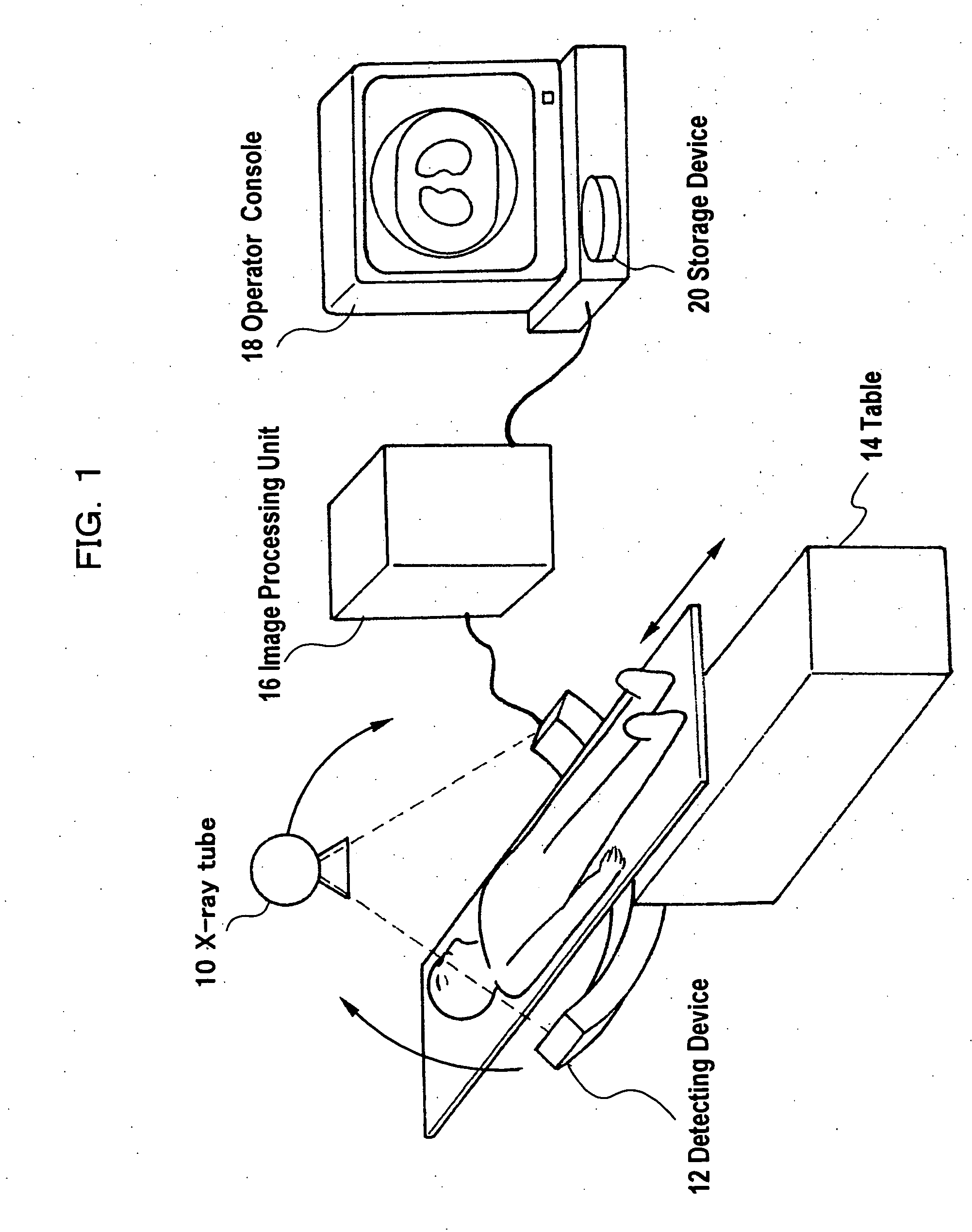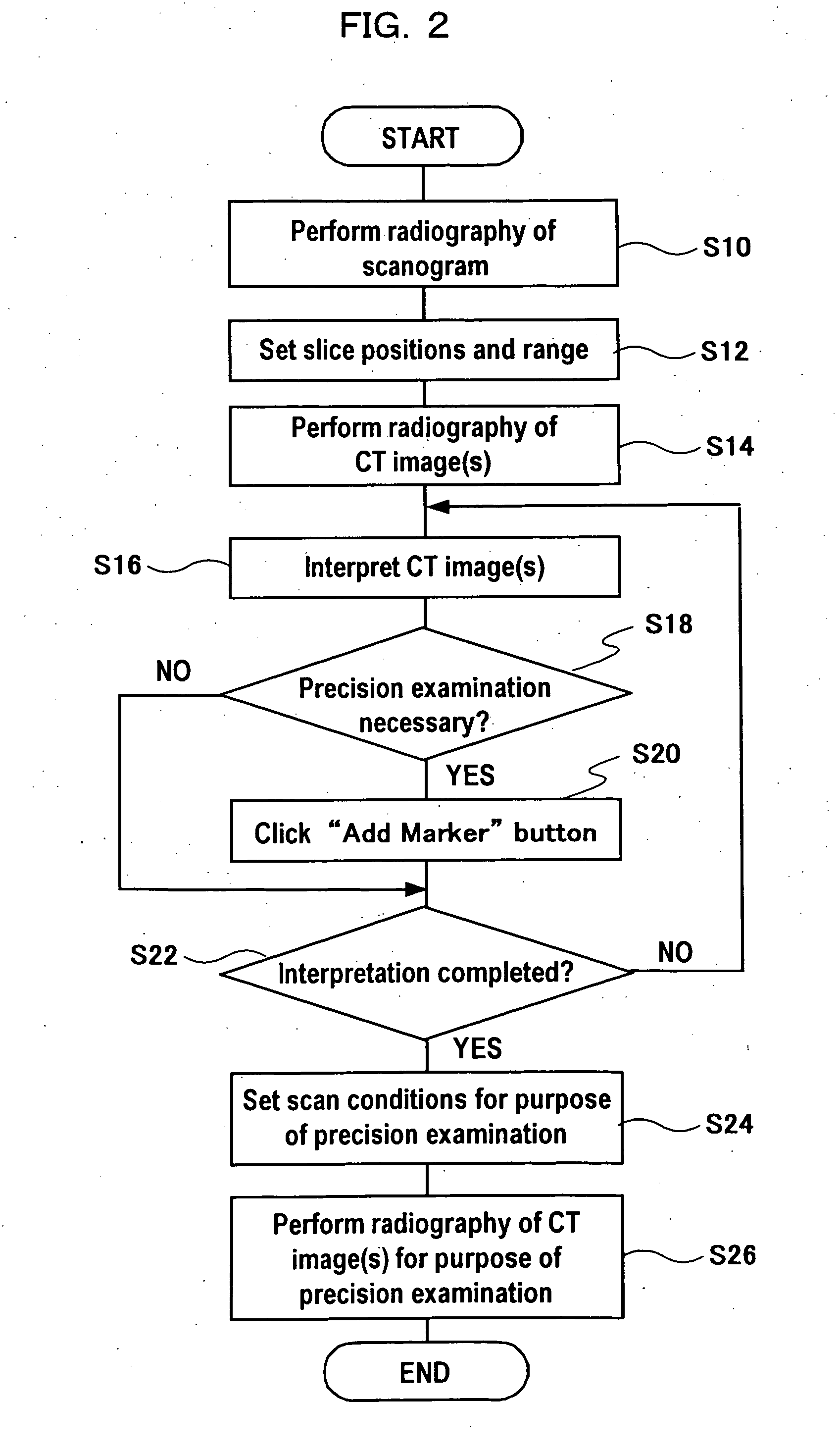Image display method and method for performing radiography of image
- Summary
- Abstract
- Description
- Claims
- Application Information
AI Technical Summary
Benefits of technology
Problems solved by technology
Method used
Image
Examples
Embodiment Construction
[0053] Hereinbelow, preferred embodiments of a method for displaying images and a method for performing radiography of image according to the present invention are described in reference of the attached drawings.
[0054]FIG. 1 is a schematic diagram showing a hardware configuration of an X-ray CT apparatus to which the method for displaying images and method for performing radiography of image according to the present invention are applied.
[0055] As shown in FIG. 1, the X-ray CT apparatus includes an X-ray tube 10, a detecting device 12, a table 14, an image processing unit 16 and an operator console 18.
[0056] The X-ray tube 10 and the detecting device 12 are disposed so as to face each other, and when taking a tomogram (CT image) they revolve around the circumference of the table 14 on which a subject is positioned. X-rays radiated from the X-ray tube 10 penetrate through the subject and the table, and are detected by the detecting device 12. Signals detected by the detecting devi...
PUM
 Login to View More
Login to View More Abstract
Description
Claims
Application Information
 Login to View More
Login to View More - R&D
- Intellectual Property
- Life Sciences
- Materials
- Tech Scout
- Unparalleled Data Quality
- Higher Quality Content
- 60% Fewer Hallucinations
Browse by: Latest US Patents, China's latest patents, Technical Efficacy Thesaurus, Application Domain, Technology Topic, Popular Technical Reports.
© 2025 PatSnap. All rights reserved.Legal|Privacy policy|Modern Slavery Act Transparency Statement|Sitemap|About US| Contact US: help@patsnap.com



